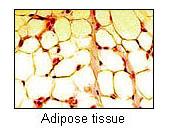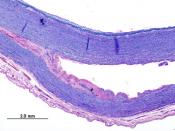Marfan Syndrome is a heritable disease of the connective tissues that affect many organs such as the eyes, lungs, skeleton, heart, and blood vessels. The condition affects both genders of all race and ethnicity groups. An estimation of at least 200,000 people in U. S have Marfan Syndrome or a related connective tissue disorder.
1. Margan Syndrome was first discovered in 1896 by a French pediatrician, Antoni Bernad Jean Marfan, when he was looking at a five and a half year old girl with long thin limbs. However, this disease is suspected to have been around for a long time. The famous Eygptian pharoh, Akhenaten, who reigned from 1356-1332 BC, had himself portrayed with long digets and a curved spine, both of which are common symptoms of the disease. President Lincoln was also speculated to be a victim of the disorder. In 1991, the chromosome, gene and component of connective tissue in which the mutation for the Marfan syndrome is located was identified.
2. The most common symptoms of marfan syndrome are associated with the cardiovascular system, the skelton, and the eyes. Victims of the disease are often have irregular heart rhythm and leakage in the mitral valve due to the mitral valve prolapse. They also have a wider and more fragile aorta that in the long term is prong to leakage and dissection. Marfan syndrome patients often have skeletal manifestations including the curvature of the spine, abnormally shaped chest, loose jointedness and disproportionate growth, often resulting in tall stature. In addition, the patients are often near sighted and 50 percent have dislocation of the ocualr lens. Shorter life spans are also common. However, the Marfan Syndrome is difficult to diagnose due to the lack of specific laboratory tests for the condition. Also, the characteristics of the disorder...


